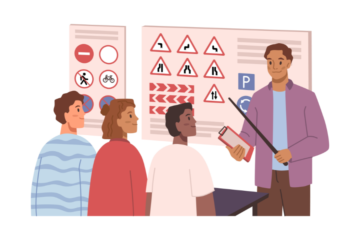Filing an insurance claim can be a complex and stressful experience, especially if you’re unfamiliar with the claims assessment process. Understanding each step can help you manage expectations and ensure that you’re prepared for what’s ahead. Here’s an overview of the claims assessment process, from the initial inspection to the final settlement, to guide you through the journey.
1. Initial Report and Notification
What to Expect:
The claims assessment process begins when you report your loss or damage to your insurance company. This can typically be done via phone, online, or through your insurance agent. It’s important to provide as much detail as possible, including the date and nature of the incident, the extent of the damage, and any supporting documentation or evidence, such as photos or videos.
Next Steps:
- The insurance company will assign a claims adjuster or assessor to your case.
- You will receive a claim number and be informed of the next steps.
2. Inspection and Documentation
What to Expect:
After you’ve reported your claim, an adjuster or claim assessor will schedule an inspection to evaluate the damage or loss. During this inspection, they will document the extent of the damage, take photographs, and gather necessary information to assess the validity and value of the claim.
Next Steps:
- Be present during the inspection if possible, and provide any additional information or documentation that can support your claim.
- Answer the adjuster’s questions honestly and thoroughly to ensure an accurate assessment.
3. Evaluation of the Claim
What to Expect:
Once the inspection is complete, the adjuster will evaluate the claim based on the findings. This involves reviewing the policy terms to determine coverage, calculating the repair or replacement costs, and checking any deductibles that may apply. The adjuster may also consult experts or contractors for more accurate estimates if needed.
Next Steps:
- Review the adjuster’s report and estimates once they are available.
- Ask questions if anything is unclear or if you believe something has been overlooked.
4. Negotiation and Settlement Offer
What to Expect:
After evaluating the claim, the adjuster will present a settlement offer based on their assessment. This offer represents the amount the insurance company is willing to pay for your claim. In some cases, there may be room for negotiation, especially if you have additional documentation or if the initial offer doesn’t fully cover the extent of the loss.
Next Steps:
- Review the settlement offer carefully and compare it against your estimates.
- If you disagree with the offer, provide additional evidence or documentation and negotiate for a better settlement.
5. Final Settlement and Payment
What to Expect:
Once you and the insurance company agree on a settlement amount, the final step is the payment. The insurance company will issue a payment according to the terms of the settlement, which could be a lump sum or multiple payments, depending on the nature of the claim.
Next Steps:
- Ensure that all agreed-upon terms are met before accepting the final settlement.
- Use the settlement funds as intended, whether for repairs, replacements, or other purposes related to your claim.
Conclusion
Understanding the claims assessment process can help you navigate your insurance claim more effectively. From the initial report and inspection to the evaluation, negotiation, and final settlement, being informed at each stage empowers you to advocate for a fair outcome. By staying organized, providing detailed information, and communicating clearly with your adjuster, you can help ensure a smooth and satisfactory claims experience.
See Also: How to Save Time and Money with a Car Service to LGA.
FAQs
How long does the claims assessment process take?
The length of the process can vary depending on the complexity of the claim, the availability of documentation, and the efficiency of the communication between you and the insurance company. Simple claims can be resolved in a few days, while more complex cases might take several weeks.
What should I do if I disagree with the adjuster’s assessment?
If you disagree with the adjuster’s assessment, you can provide additional evidence, such as photos, receipts, or third-party estimates. You may also consider hiring an independent loss assessor or public adjuster to advocate on your behalf.
What role does a claims adjuster play in the assessment process?
A claims adjuster is responsible for inspecting the damage, evaluating the claim, and determining the appropriate settlement amount based on your insurance policy. They work for the insurance company but should conduct their assessments fairly and accurately.



